Nicole O’Loughlin is a multi-disciplinary artist in Tasmania who only picked up needle and thread in 2013. She has taken up the ‘subversive stitch’ mantle and uses textiles, print and paint to communicate issues close to her heart.
When the book ‘The Subversive Stitch – Embroidery and the Making of the Feminine’ was written by Roszika Parker in 1984, and she coined the phrase ‘subverting the stitch’, she helped to launch a new genre of contemporary stitch.
It was a change that had begun in the 19th century when embroidery was seen as an elegant pastime for women, classed below the fine art mediums of painting and sculpture. But with the Arts and Craft Movement of that time and the Suffrage Movement in the early 20th century, women became emancipated. They employed the very medium that had previously limited their position in art and society to break through that glass ceiling and used it to embrace the socio-political and feminist issues of the day, while giving it a respectable platform in the art world.
Nicole has developed from her first embroidery of the A-Team’s Mr T, to Freddie Mercury pop art, to now addressing the world around her. Her images vary from small micro-organisms to issues of litter in the landscape and the effects of covid-19. Nicole’s variety of skills inform her work and direct the shape they take, allowing for a dynamic and evolving arts practice.
We feel sure you’ll not just see, but sense the powerful messages in Nicole’s pithy, stitched images.
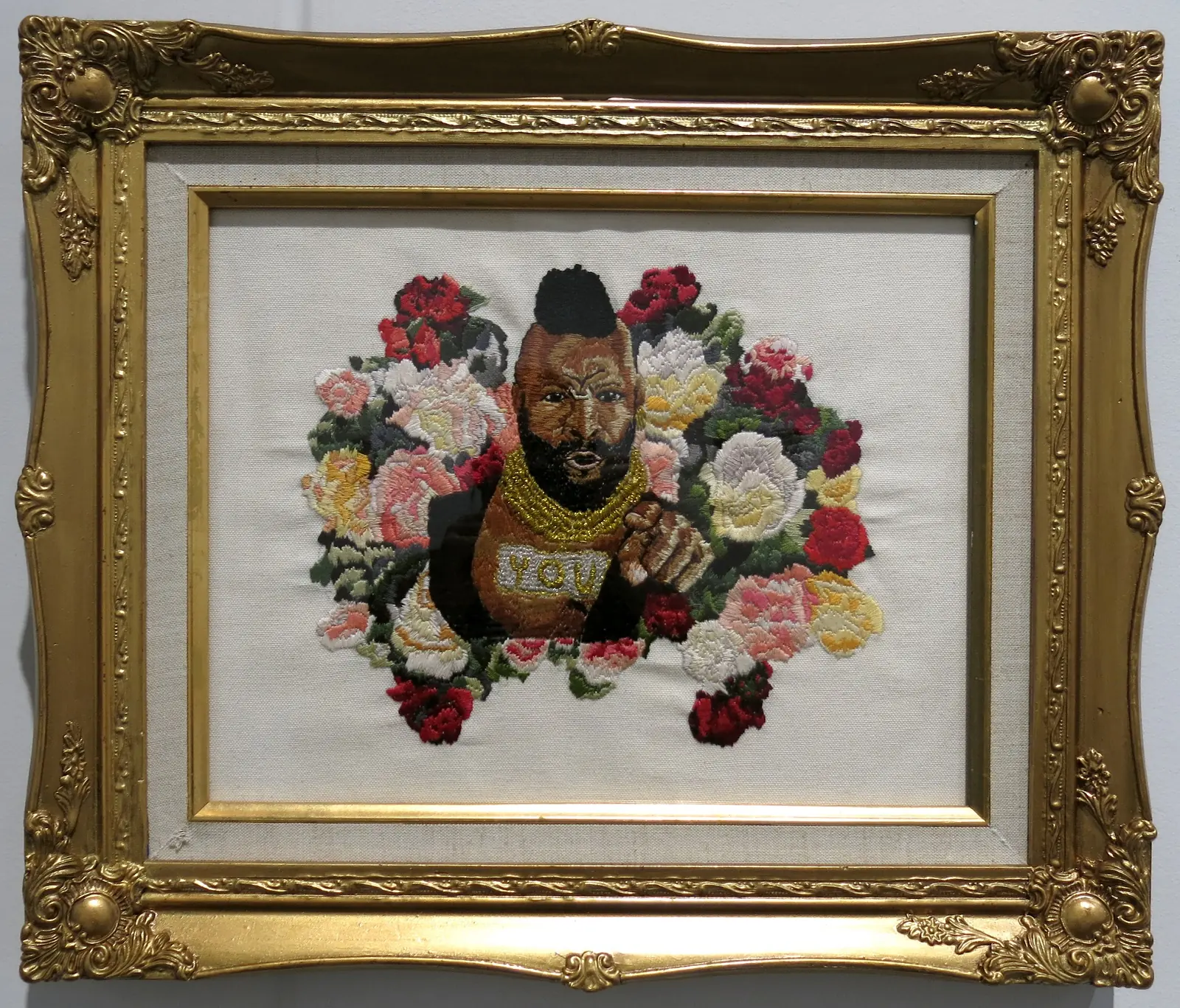
Painting with embroidery thread
TextileArtist.org: What initially attracted you to textiles as a medium? How was your imagination captured?
Nicole O’Loughlin: I made my first embroidery in 2013. It was of Mr T from the A Team and he was surrounded by flowers.
I didn’t take up textiles again until my child was born in 2016. I felt I needed something to make that I could pick up and put down again easily. What cemented my decision was a visit to an exhibition of Australian quilts at the National Gallery of Victoria (NGV).
There were examples of quilts from the 1800s, some from prisoner of war inmates and others from unknown makers. I recall standing in front of them and finally understanding the power of textiles and the medium’s ability to convey meaning through stitch. I was also drawn to the long history of women creating and recording their own stories using the visual language of threads. As a new mother, I felt I wanted to contribute to this dialogue and that this was the medium that would best suit what I wanted to say.
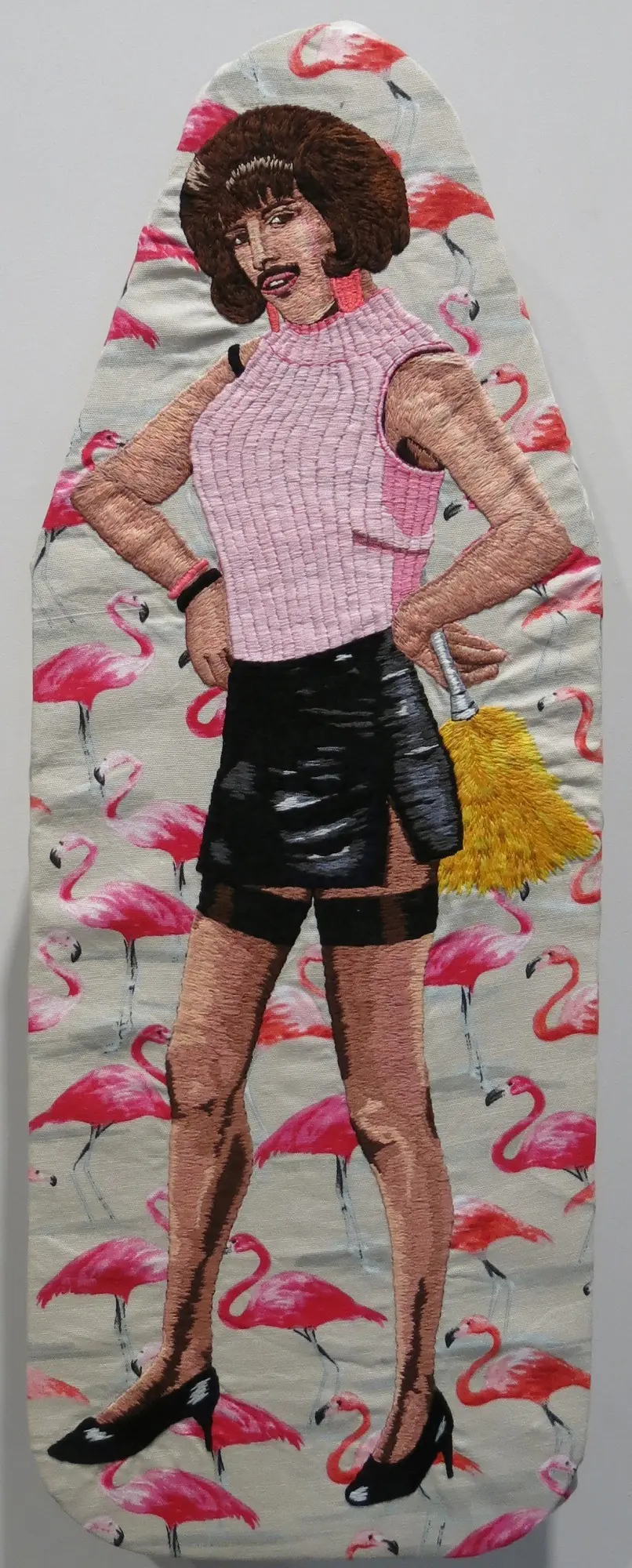
What or who were your early influences and how has your life/upbringing influenced your work?
When I first started exploring embroidery, I remember seeing the works of Fiance Knowles, Cayce Zavaglia and others on social media. What I noticed was how they were using embroidery with a strong contemporary voice. They were painting with embroidery thread and I found that exciting and inspiring.
My first main body of work after the birth of my son reflected on gender roles and the ideas of feminine and masculine ideals in our society. I started to look back at the pop stars I grew up with in the 80s and 90s, as well as reflecting on my Catholic schooling. Music was a big part of our lives and that was a key influence on the first series I created, Pop Life, in 2018.
I think my imagination was nurtured by growing up in the country on a farm. We were always outside playing on the land and creating imaginary worlds for ourselves. Our house was filled with books and records, so I always had that early engagement with the arts.
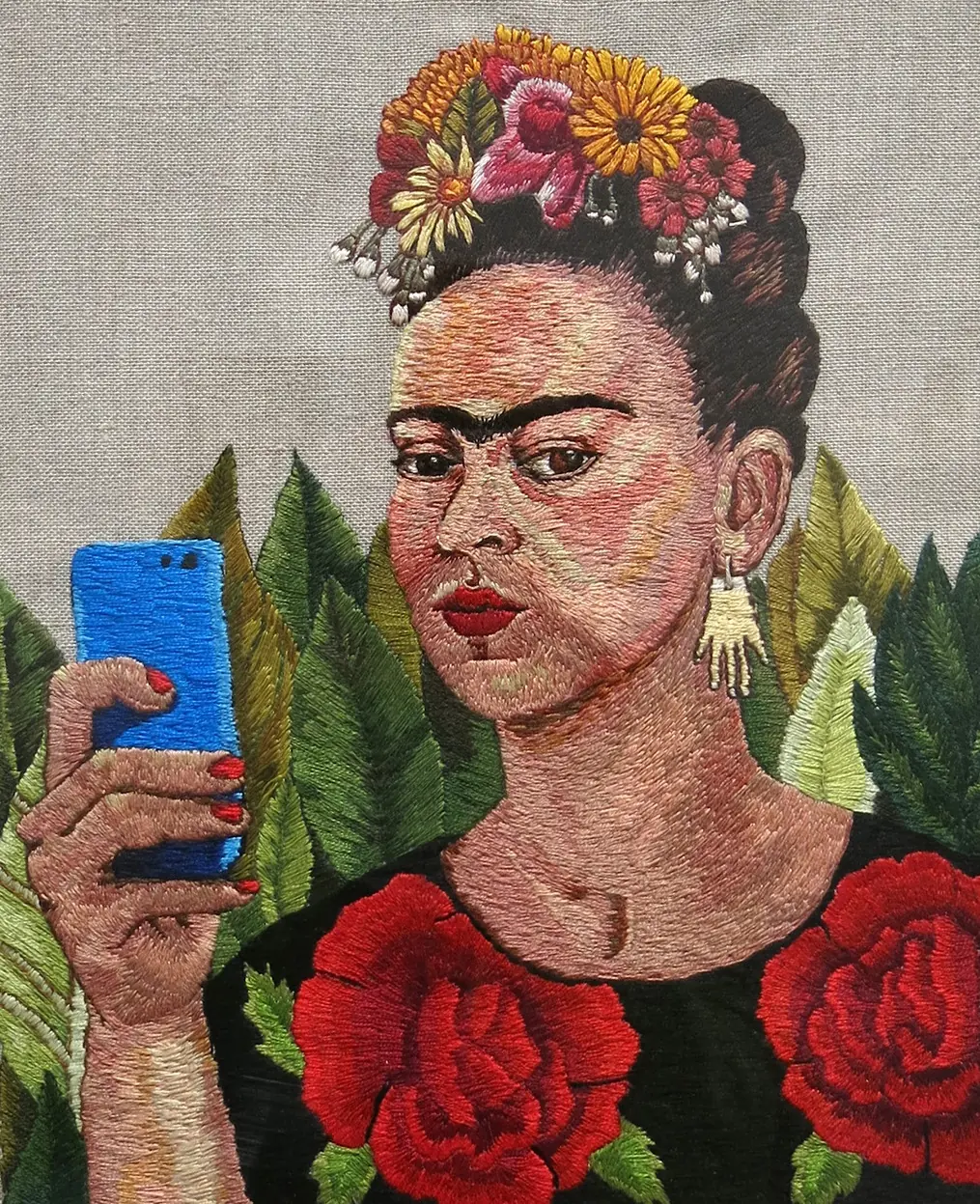
What was your route to becoming an artist?
I initially studied and worked in business. Then in my mid twenties I went to live and work in Europe, as a lot of Australians do, on a working holiday visa. Whilst there I visited the galleries and museums, and my love of art was rekindled. I had studied art and graphic design in high school, but it wasn’t considered a good career choice.
I returned to Australia, went through technical college and then studied for a Bachelor of Fine Arts at the School of Creative Arts and Media (CAM) in Hobart, Tasmania, where I majored in printmaking. I now teach there in the drawing and printmaking department.
Art school is great for the sense of community and accessing all the facilities that you wouldn’t otherwise get to use. While I don’t do a lot of printmaking presently, learning that skill, in all its forms, taught me to fall in love with process and that things take time – that’s something that’s very applicable to working in textiles as well. Since art school, I shifted mediums into textiles and have continually exhibited and made works since then.
I also studied in Madrid, Spain for part of my bachelor degree, and was able to soak up the tradition of a European art school there.
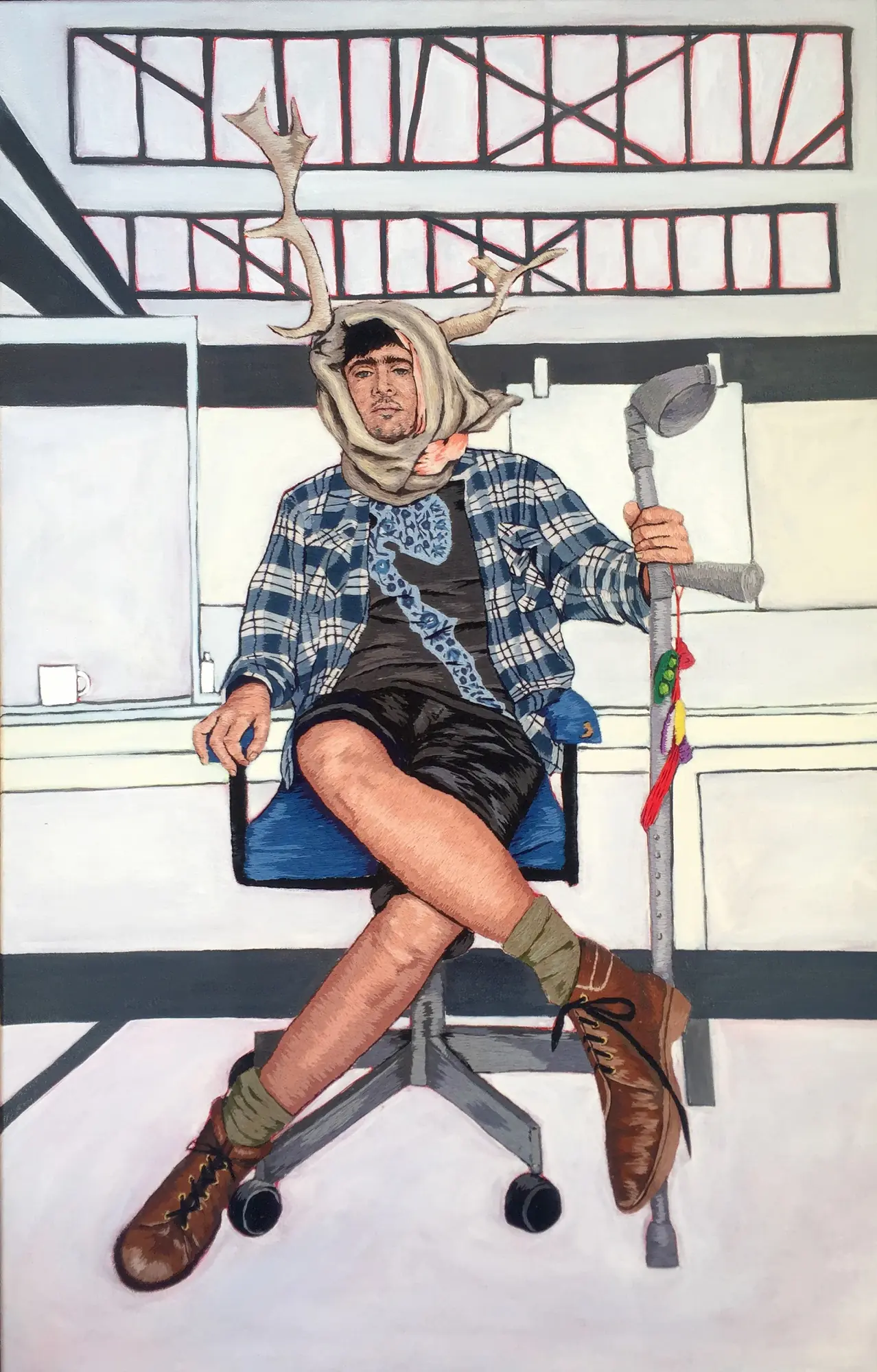
Paint, applique and quilting
Tell us about your process from conception to creation
A lot of the time there will be a song or something on the news that triggers an idea, or I may be prompted through the continual journaling of my surroundings or from processing the world around me.
I use my journal to work out the work or series, starting with notes and rough sketches for composition and what will or won’t be included. I then source the images. In the past, these were a combination of found images and shots I’d taken of myself or others as reference poses. These images then get drawn up in graphite into a more resolved drawing. Once I am happy with the drawing, I transfer it to the material.
I make colour studies of each section and record associated thread colours in a list. I keep small notebooks recording all the numbers of the threads for each subject. Mostly I use a stitching technique that blends short and long stitch. I am self-taught so I probably do many things that traditionalists would be horrified by.
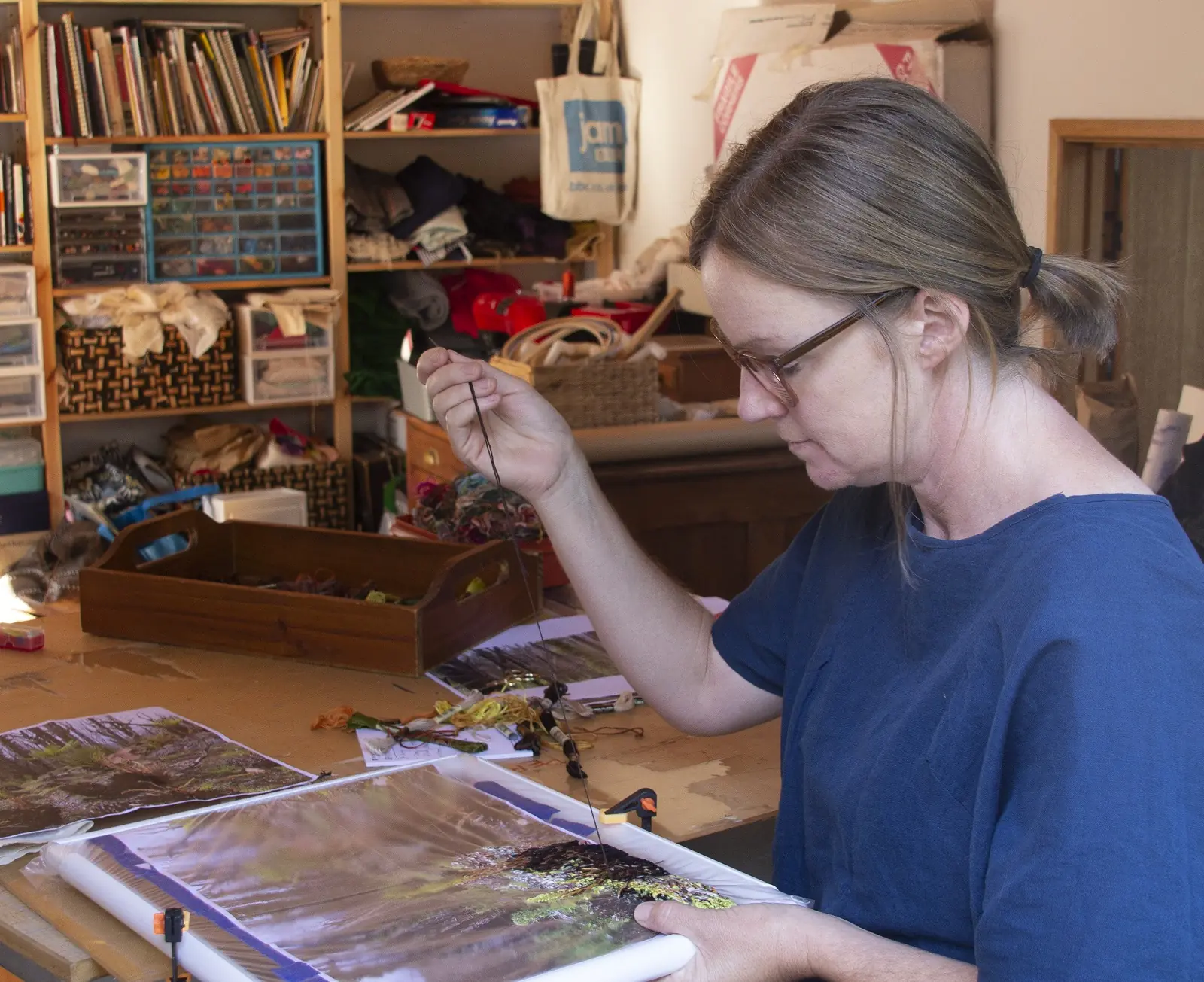
Tell us a bit about your chosen techniques and how you use them
Mostly I use embroidery and use the thread, like paint, building up an image through tone and form. I have also tried out quilting in the past two years, incorporating embroidery and applique into the works.
I sometimes paint the backgrounds on my embroidery canvas. This can save time, but I like the contrast between the textures of the flat paint and those of the raised threads. I have also recently experimented with dissolving the supporting material for the embroidery away, to allow the stitches to hold their own form. The subject I choose, and what I want to say with the work, will inform the process I use and how I use it.
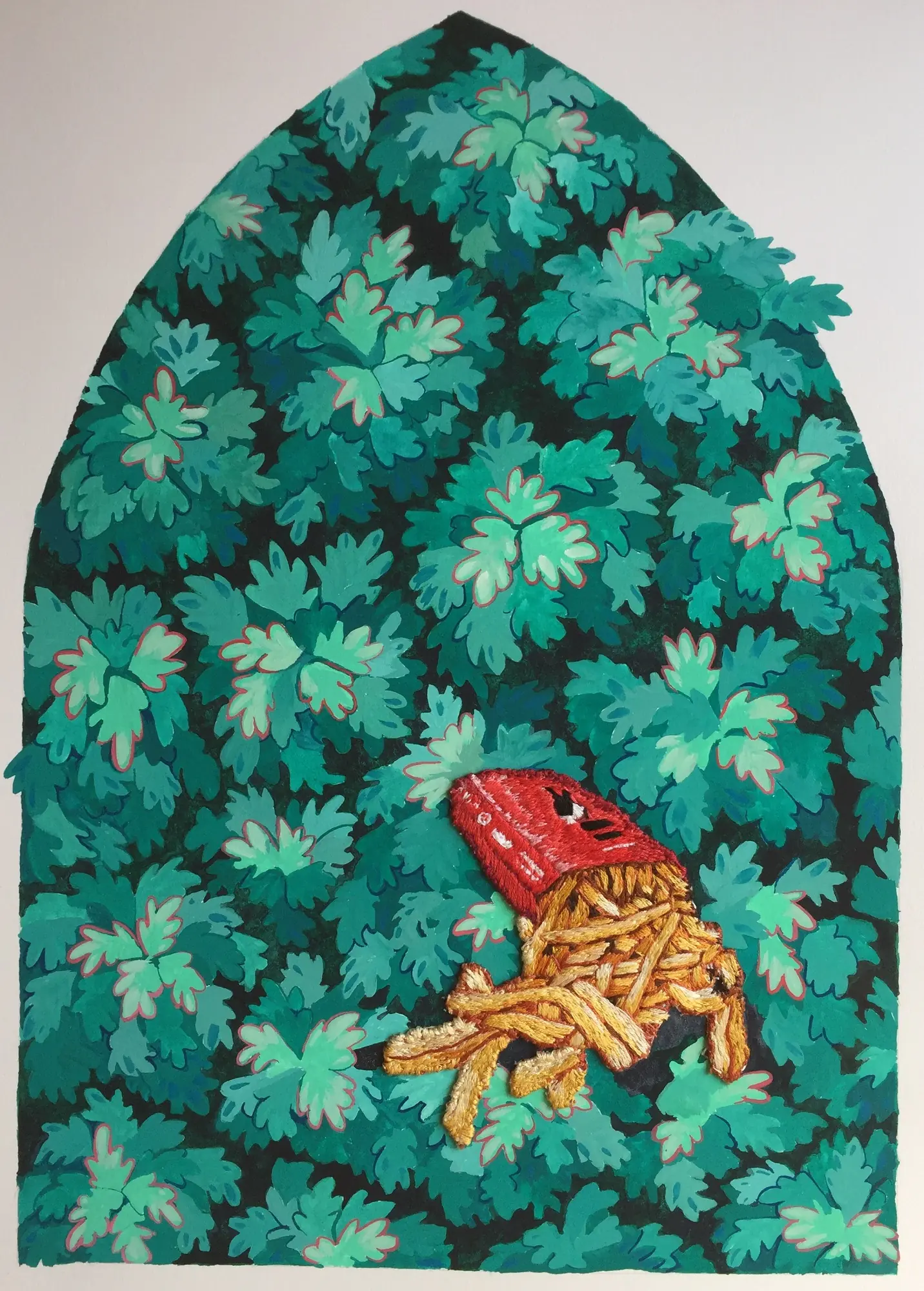
What currently inspires you?
Currently, I am completing a series that looks at rubbish in the landscape. It is inspired by the area that I’ve moved to where there is beautiful bushland, and yet on the side of the road there are so many discarded takeaway containers.
The work is also inspired by Flemish tapestries and the use of landscape in a decorative way. Bringing these two elements together seeks to make a commentary about our relationship to nature.
Most of my recent work is concerned with socio-political situations and subverting the stitch to present works that bring a smile to people’s faces whilst also getting them to think about societal issues. After this series is complete, I will be making work for a solo exhibition using many different needlework techniques. It will provide me with an opportunity to really play with textiles and to move towards larger installation works.
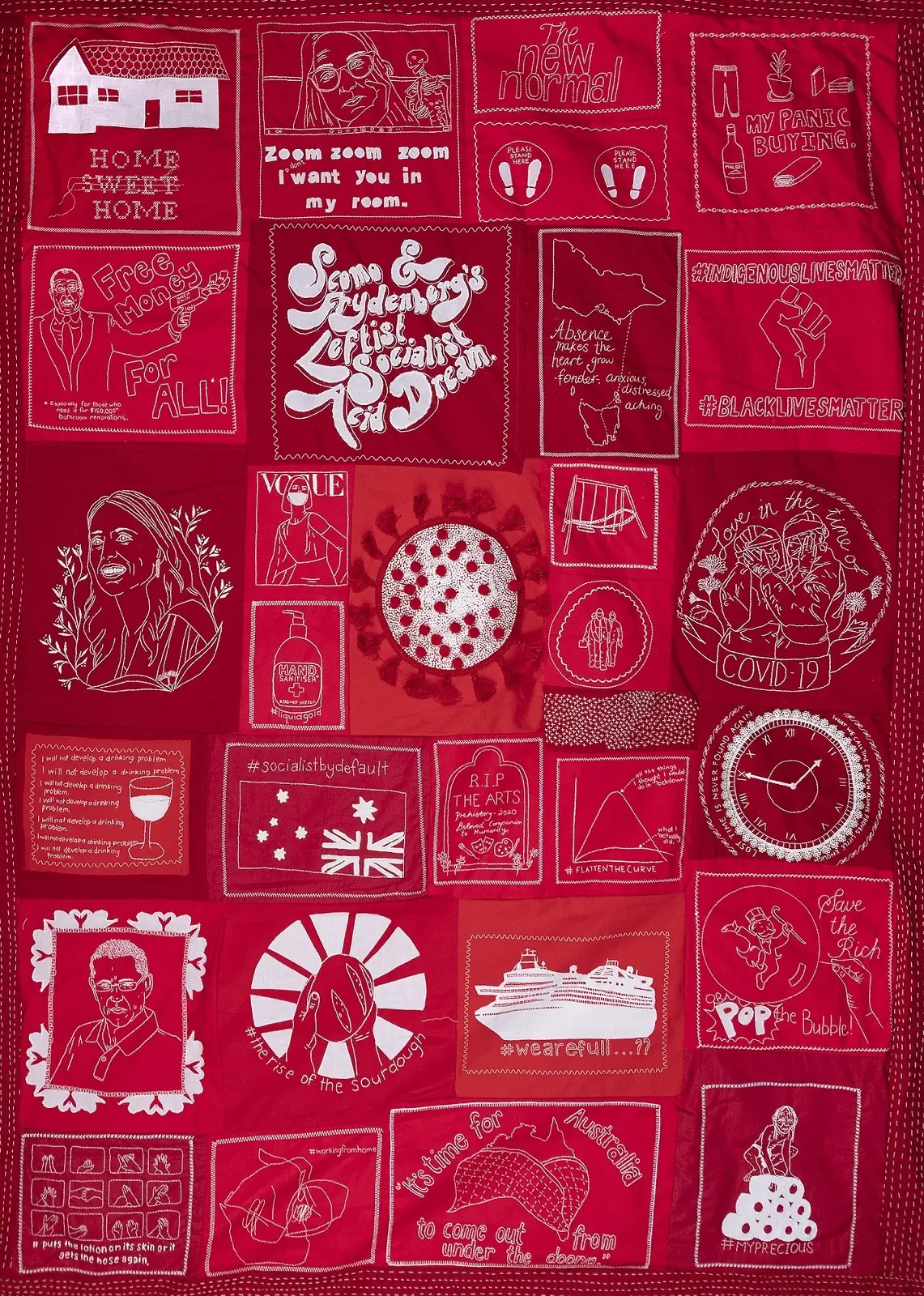
Documenting with stitch
Tell us about a piece of your work that holds particularly fond memories and why?
COVID Dis-Comforter is a work that holds so many memories and acts as a time capsule for me. While we have been extremely lucky here in Australia, and even more so on the island where I live, 2020 presented such an upheaval of life as we knew it.
When the coronavirus started to take a hold on the world, I observed myself slide into a state of heightened anxiety. I was checking the news constantly, as if, somehow, if I knew the situation, I could keep it under control in my mind. Then I became exhausted. I didn’t know how to respond creatively to what was happening and felt like anything I produced was bereft of meaning or value.
Originally, I planned to keep a visual journal, processing through drawing and writing. Then I remembered the stories of women who shared quilt-making together and took particular inspiration from the Westbury Quilt 1900-1903 made by Ms Hampson, which I saw in the Making the Australian Quilt exhibition at the NGV in Melbourne.
I began to construct a stitched journal, documenting the months of lockdown. Each square represents the personal, political and social elements of that time. It makes fun of the politicians and their attempt to come to grips with the decisions they had to make. It reflects on the reactions of society which veered towards panic and uncertainty. It documents my own journey through it all. It also addresses the collective political events, like the Black Lives Matter movement that gathered momentum during the lockdown, as well as the not so safe home environments that were enforced upon some.
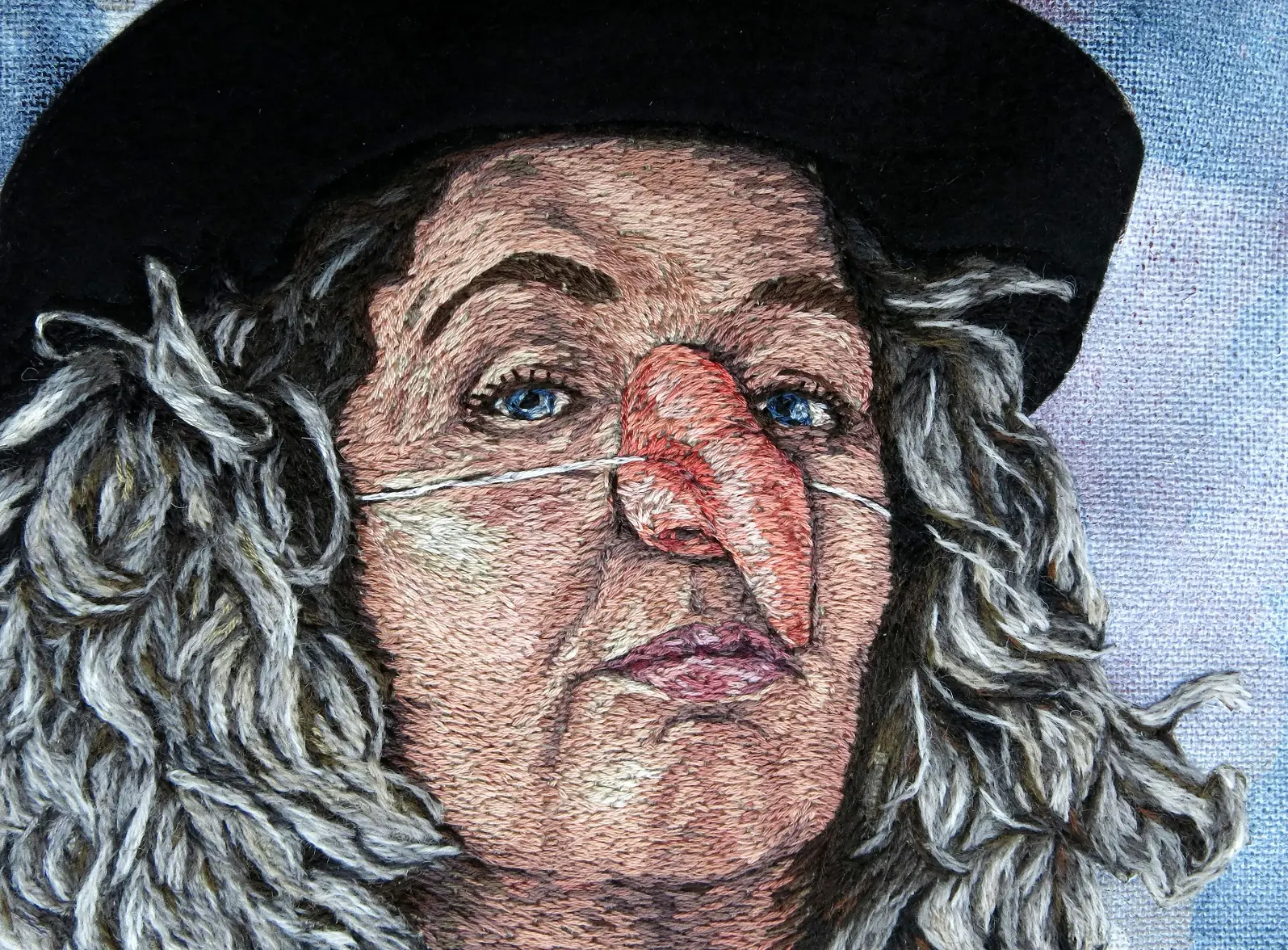
How has your work developed since you began and how do you see it evolving in the future?
My work has evolved a lot since I made my first embroidery. The subject matter has become more personal and about people I know, rather than pop stars. For example, fellow Tasmanian artist Sally Rees had an exhibition Crone at the Museum of Old and New Art (Mona) in Hobart. There was an exhibit where Sally wore a witch’s nose, embracing her inner crone and I made an embroidery of that image.
Whilst I have improved my stitching skills through thousands and thousands of hours of work, I have also developed, and continue to develop, a knowing relationship with textiles as a medium.
I enjoy exploring its flexibility and transformation through the maker’s hand. I am continually learning new skills in textile mediums and want to allow the different techniques to inform how I create my works. I would like to push my work into an installation format, to allow viewers to become immersed in the works. I also like the idea of combining different textile techniques and experimenting with more found materials in my works.
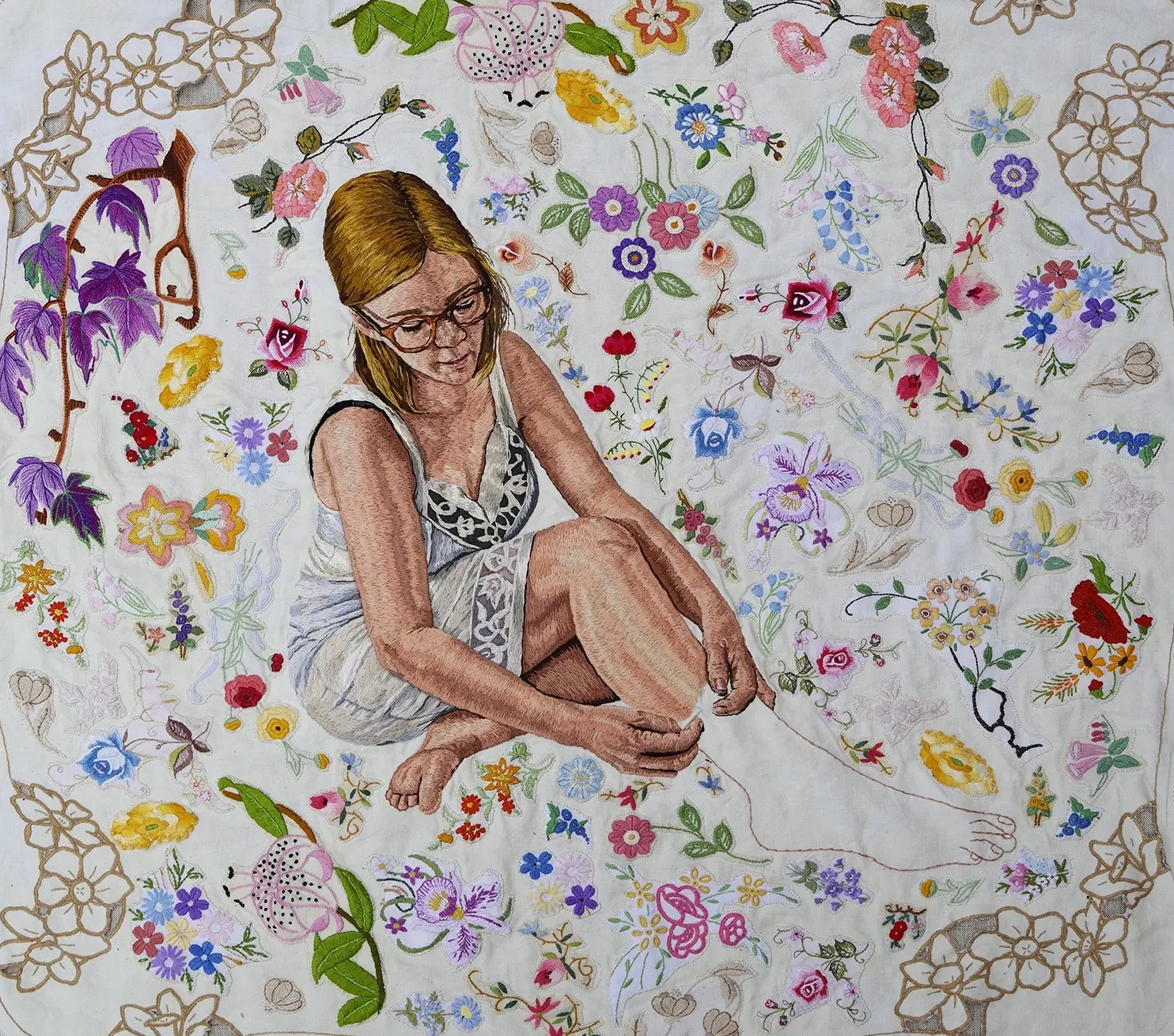
Key Takeways
- It’s never too late to return to textile art – you can start exploring from exactly where you are – right now!
- Journaling is a great way to brainstorm your ideas: for composition, images, colours, threads and stitches.
- Try introducing different needlework and mixed media techniques into your work – they can complement each other and develop your skills.
- Subvert YOUR stitch! What do you want to speak out about?
About the artist
Nicole graduated from the Tasmanian College of the Arts in 2009 and in 2015 she received a first-class honours degree from the School of Creative Arts and Media (CAM) in Tasmania, having completed a year’s exchange at the Madrid Art School in Spain as part of her degree.
She is now a PhD candidate at CAM, researching the impact of arts and creativity on health and wellbeing. She also teaches in the printmaking and drawing studio there.
Nicole’s work is part of national, state, and private collections, including the Australian Parliament House Art Collection. She has participated in residencies in Argentina, China and on the isolated wind-swept Maatsuyker Island. Her work has been included in significant national art prizes receiving highly commended, people’s choice and packers awards.
Website: www.nicoleoloughlin.com
Instagram: @nicole_p_oloughlin
Have Nicole’s techniques or motives inspired you at all? Let us know in the comments below.
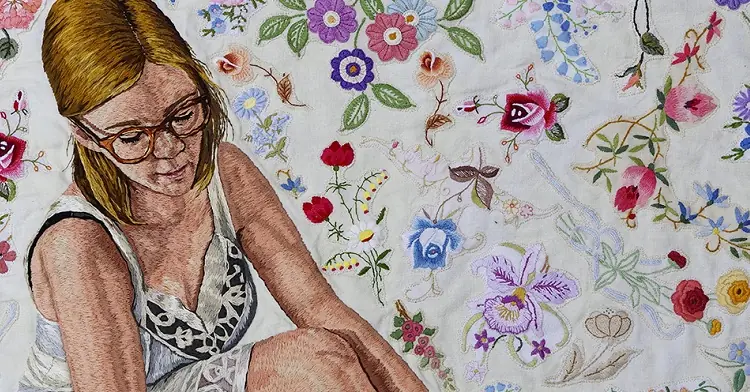

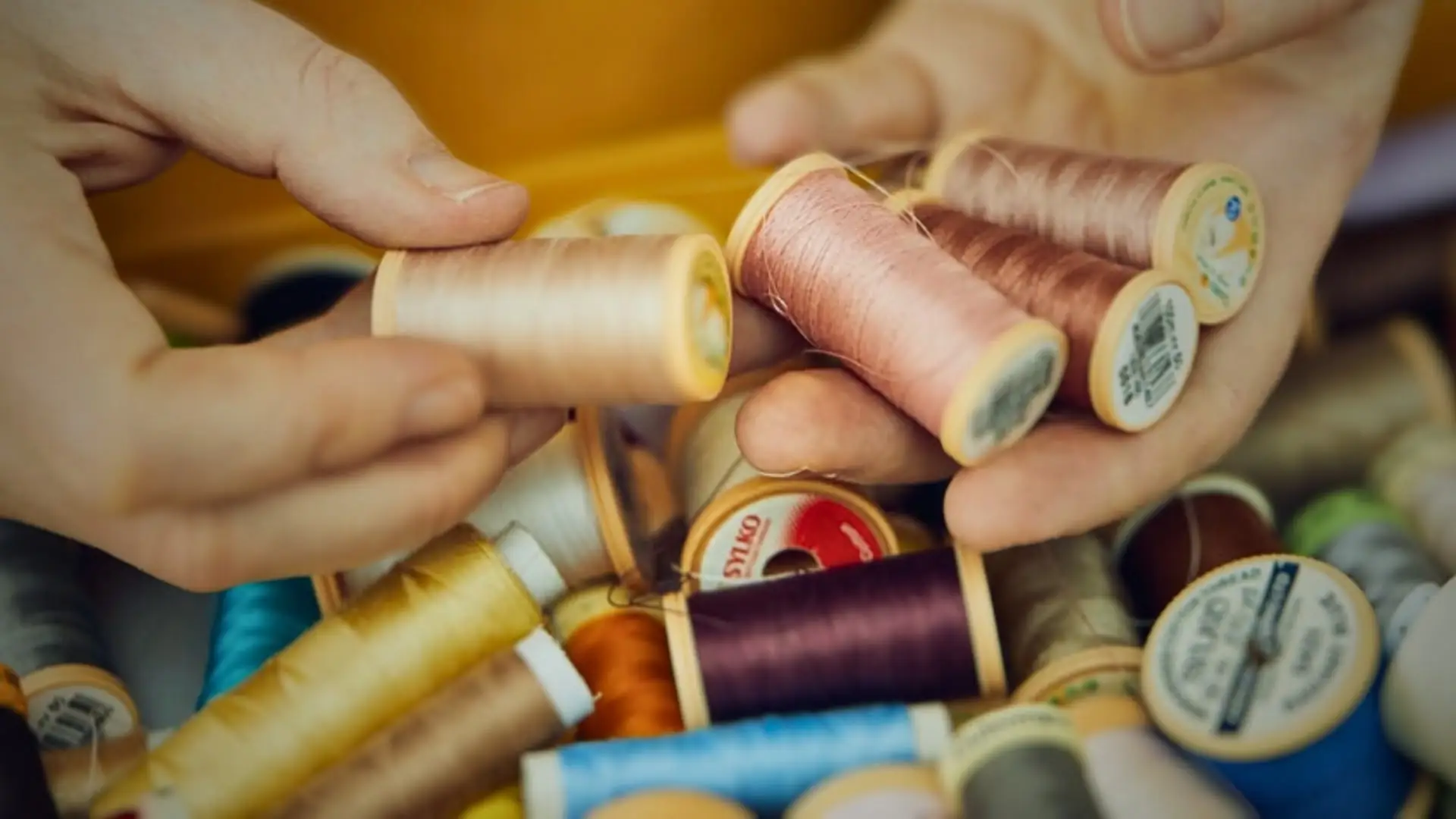
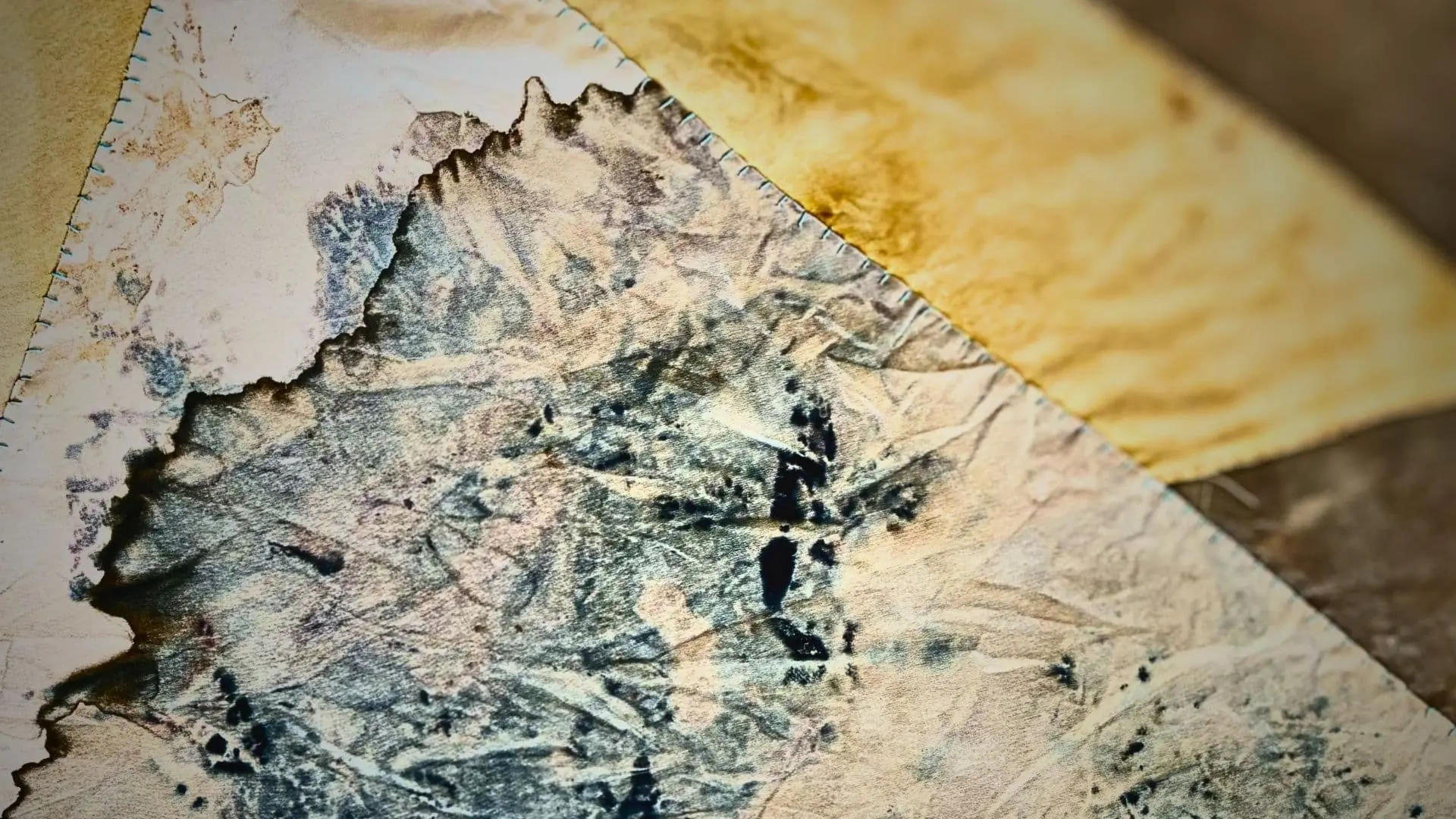
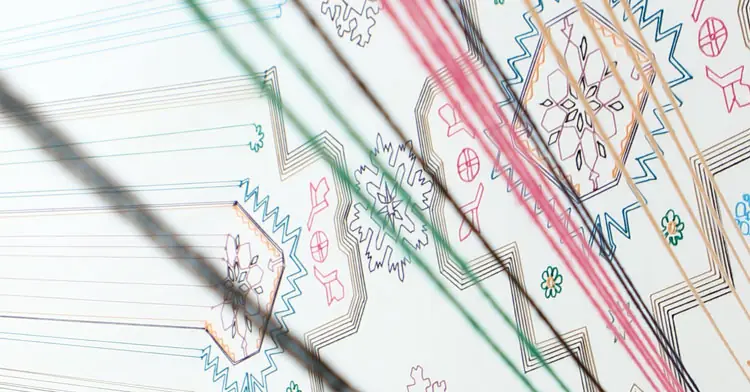
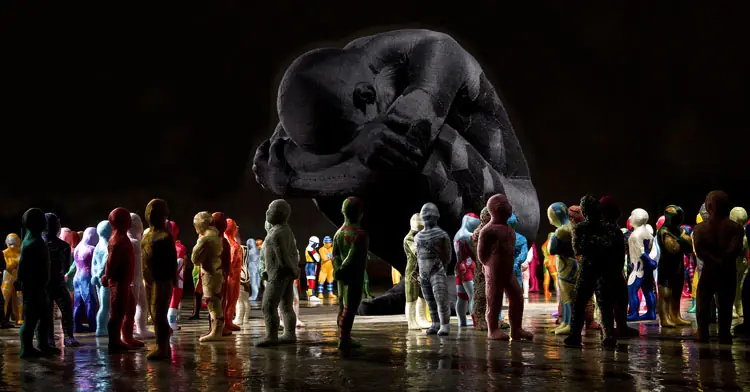
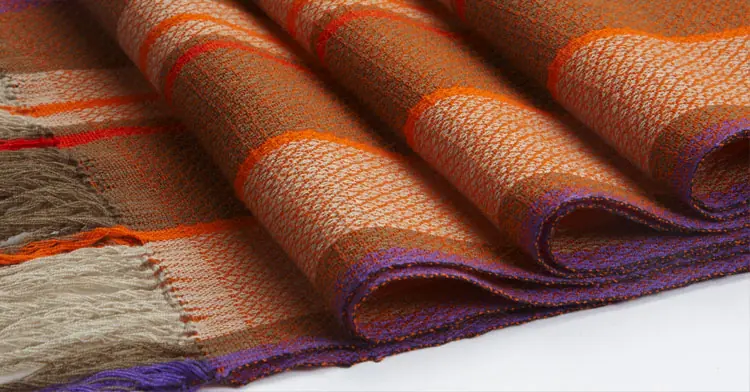
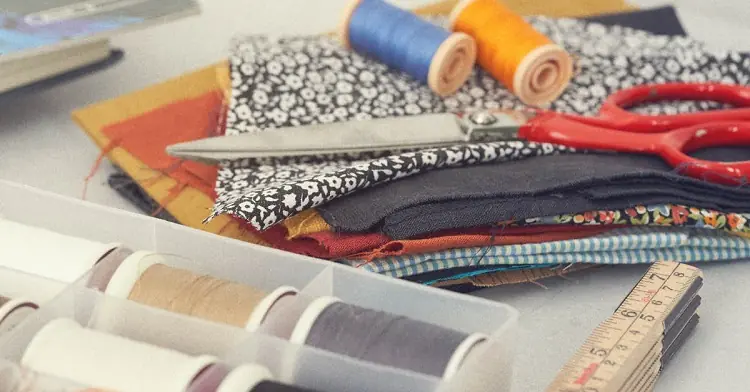
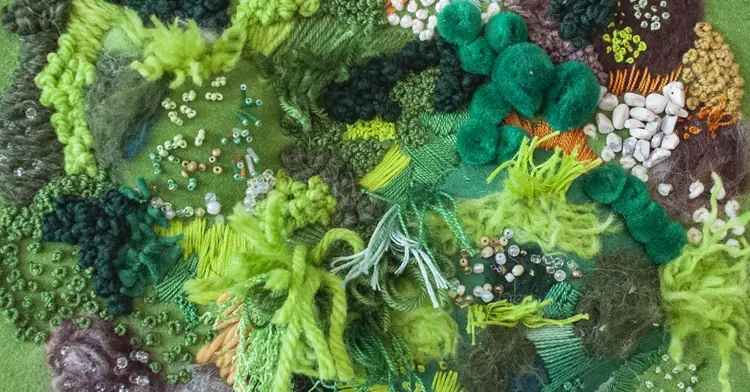
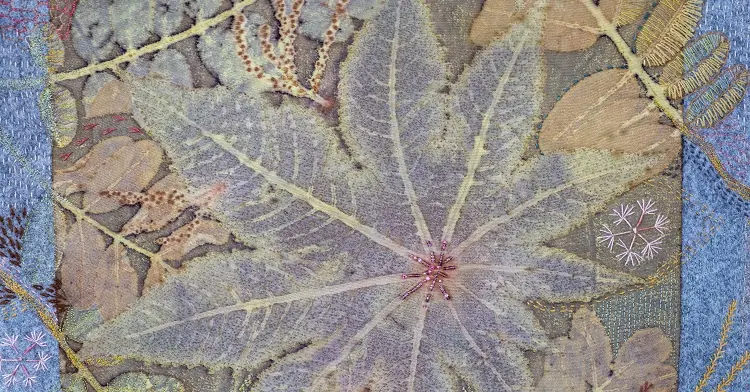
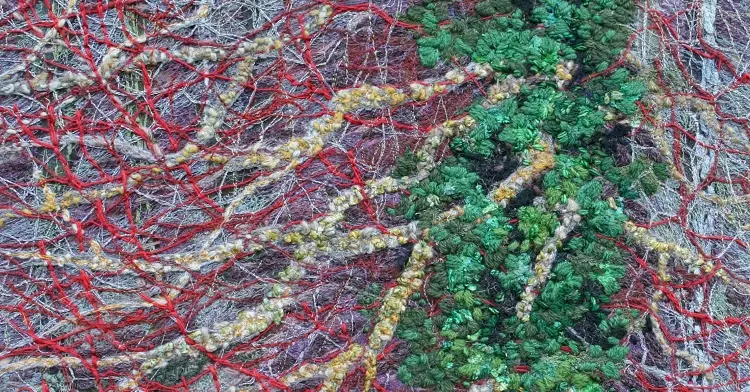
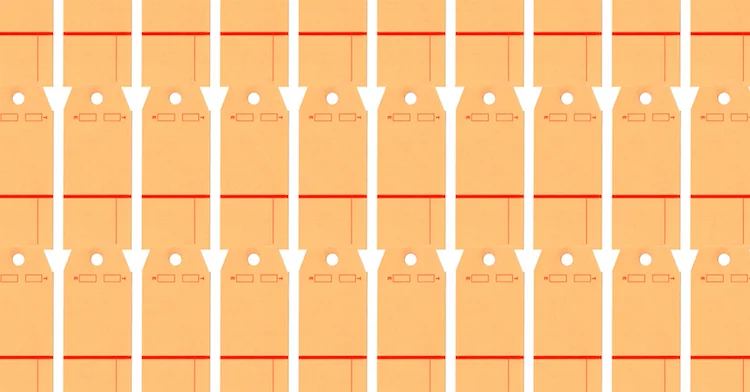
6 comments
Cath Sanderson
Hi Nicole
I found your Covid Discomforter piece extremely moving & fascinating. What an unusual way to document & remember the many important but also at times very disturbing changes that were imposed on lives all over the world as well as on our own lives. Just using the two colours of white & red make it a very potent reminder of that time.
Nicole O'Loughlin
Hi Cath,
Thanks for your kind words. Yes it was a very interesting and momentous time. Looking back now we weren’t affected as much as many other people, living on an island meant we were protected from the full impacts. However, it was such a life changing moment. It felt like an experience worthy of documenting. Thanks again, I hope you get to do some stitching yourself?
Best wishes,
Nicole
Laura
Gorgeous work. I have just signed up to follow you on Instagram. Thank you sharing your talent with everyone!
Nicole O'Loughlin
Hi Laura, thanks so much 🙂 Say hi on insta as well so I can see your work. Best wishes,
Nicole
Victoria Charkut
Hi! This is fascinating as is Nicole. I am definitely going to try this. I want to combine painting with stitches. I wondering if I missed it in this article, but the last thing I read is the caption to the self-portrait, Hand embroidery and found embroidery on vintage linen. I really want to know what “found embroidery” means. That is a beautiful piece! I also wonder what paint medium she used as I believe the flowers are painted? Very cool work.
Nicole O'Loughlin
Hi Victoria,
Thanks so much for your kind words. The found embroidery means that I source doilies and textiles from op shops etc, and then reuse them in my own work. The flowers are cut from other textiles and rearranged into this work. Normally when I use paint it would be either acrylic paint.
I hope your play with the materials goes well 🙂
Best wishes,
Nicole